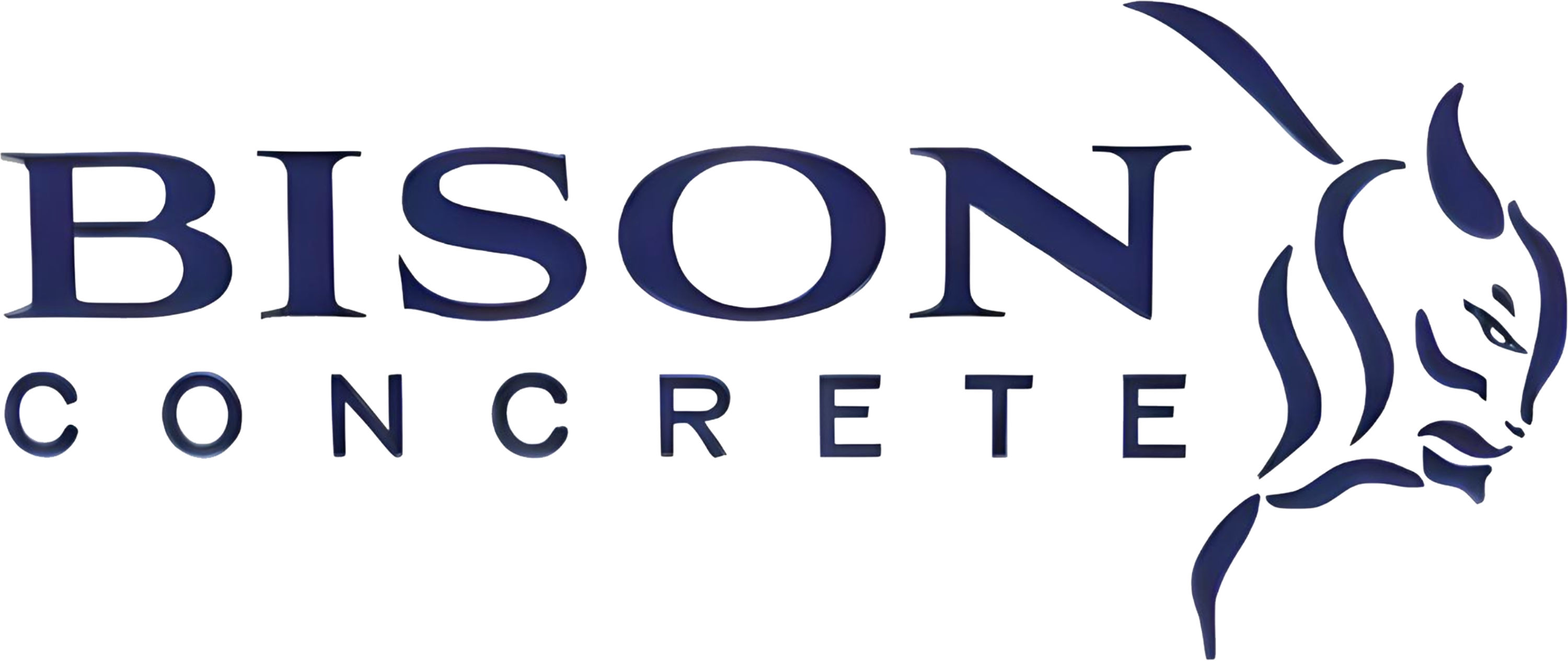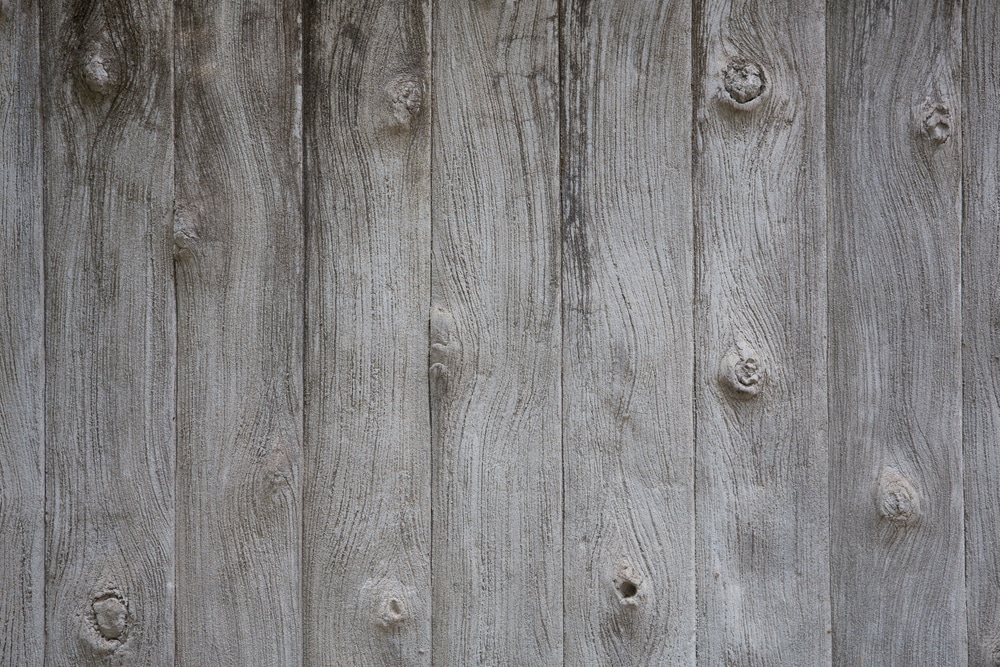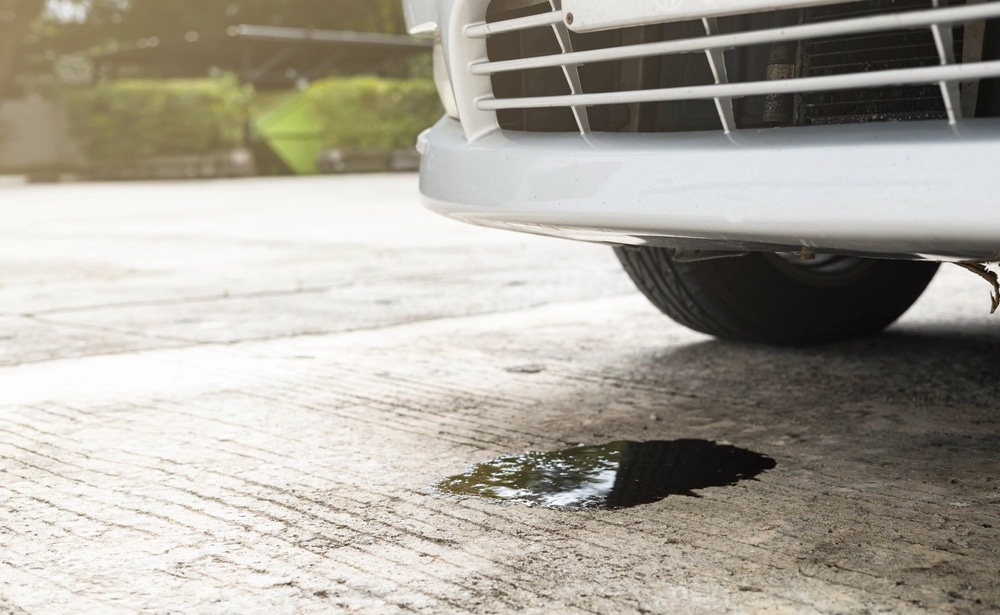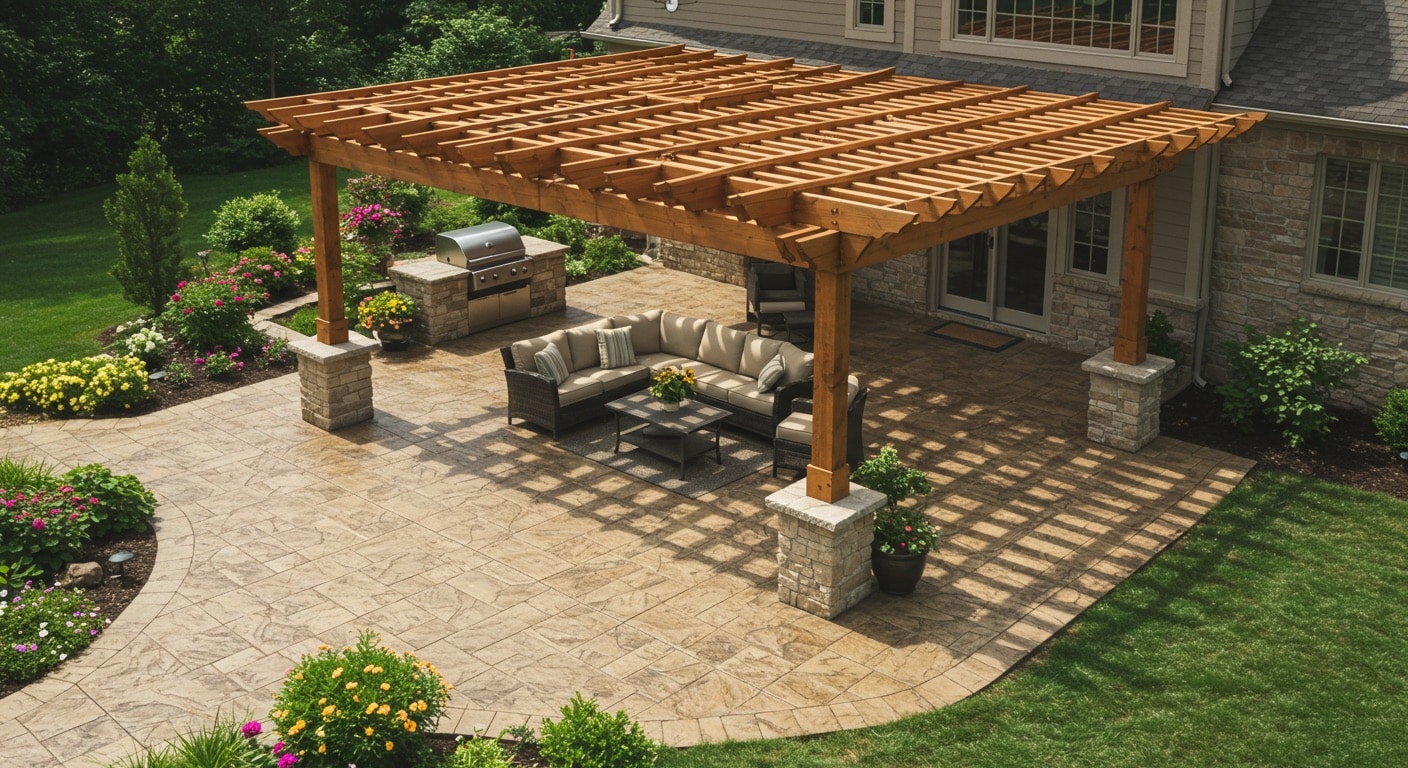How to Tell If You Need Concrete Driveway Repair or Replacement
June 17, 2025Your driveway is more than just a place to park your car – it’s one of the first things people notice about your property and plays a crucial role in your home’s curb appeal and functionality. Over time, Oklahoma’s harsh weather conditions can take a toll on concrete surfaces, leaving homeowners wondering whether a simple repair will suffice or if a complete replacement is necessary. Making the right decision can save you thousands of dollars and prevent further damage to your property. In this comprehensive guide, we’ll walk you through the key signs that indicate whether your concrete driveway needs repair or replacement, helping you make an informed decision for your home. Bison Concrete specializes in helping Oklahoma homeowners evaluate their concrete driveways and providing expert solutions tailored to each unique situation.
Signs Your Concrete Driveway Needs Attention
The first step in determining whether you need repair or replacement is identifying the warning signs of concrete deterioration. Catching these issues early can often mean the difference between a simple repair job and a complete overhaul.
Cracking: Minor vs. Major Concerns
Cracks in concrete driveways are common, but not all cracks are created equal. Hairline cracks (less than 1/4 inch wide) are typically cosmetic issues that can be repaired relatively easily. These small cracks often result from normal concrete shrinkage during the curing process or minor settlement.
However, larger cracks (wider than 1/4 inch) or those that create uneven surfaces require more serious attention. These may indicate structural problems beneath the surface. Particularly concerning are cracks that form patterns often referred to as “alligator cracks” – a network of connected cracks resembling alligator skin. This pattern typically suggests significant structural failure.
For a detailed breakdown of various crack types, Bison Concrete’s guide on common concrete slab cracks provides valuable insights for Oklahoma homeowners.
Surface Damage: Spalling, Scaling, and Pitting
Surface deterioration comes in several forms, each with different implications for your driveway’s health:
- Spalling: This occurs when the surface of the concrete flakes or peels away, exposing the aggregate underneath. It’s often caused by freeze-thaw cycles, improper finishing techniques, or poor concrete mix.
- Scaling: Similar to spalling but typically less severe, scaling appears as shallow, flaky areas on the concrete surface.
- Pitting: Small holes or divots in the concrete surface, usually resulting from freeze-thaw cycles or chemical exposure.
Minor surface damage can sometimes be repaired with resurfacing techniques or upgraded with Decorative Concrete finishes to improve both durability and curb appeal.
Drainage Issues and Pooling Water
Proper drainage is essential for any driveway. If you notice water pooling on your driveway after rain or irrigation, this indicates a drainage problem that needs addressing. Standing water can accelerate concrete deterioration through freeze-thaw cycles and cause erosion of the subgrade materials.
Water pooling may result from:
- Improper slope during installation
- Settlement or sinking of sections
- Surface deterioration creating low spots
Addressing drainage issues promptly can prevent more serious damage to your driveway and adjacent structures.
Understanding Concrete Driveway Deterioration Causes
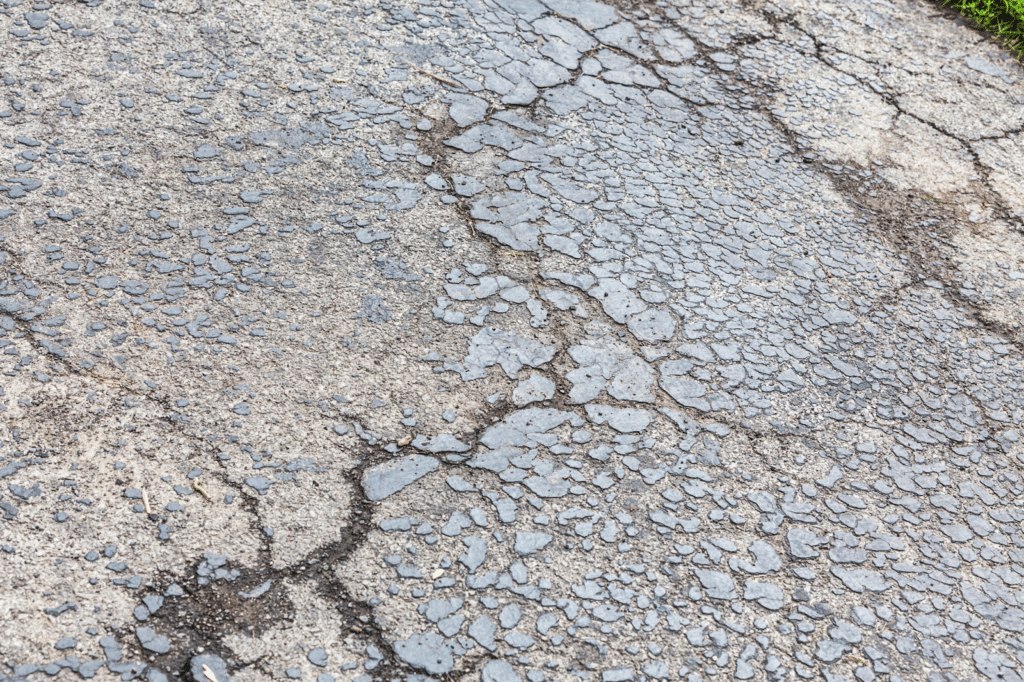
To make an informed decision about repair versus replacement, it helps to understand why concrete driveways deteriorate in the first place.
Weather and Climate Factors in Oklahoma
Oklahoma’s climate presents unique challenges for concrete driveways. The state experiences significant temperature fluctuations, from scorching summers to freezing winters. These dramatic changes cause concrete to expand and contract, which can lead to cracking over time.
Freeze-thaw cycles are particularly damaging. When water seeps into small cracks and then freezes, it expands by about 9%, putting enormous pressure on the surrounding concrete. This process, repeated over many winters, can turn minor cracks into major structural problems.
Additionally, Oklahoma’s occasional severe weather events, including hailstorms and flooding, can cause impact damage or soil erosion beneath driveways, leading to settlement issues.
Installation Quality and Its Long-term Impact
The saying “you get what you pay for” certainly applies to concrete driveways. Many problems stem from poor installation practices, including:
- Inadequate subgrade preparation
- Improper concrete mix design
- Insufficient reinforcement with rebar
- Poor finishing techniques
- Inadequate curing time and methods
Bison Concrete’s analysis of proper rebar spacing explains why many Oklahoma driveways fail prematurely due to installation shortcuts. Proper reinforcement is critical to concrete longevity, especially in Oklahoma’s challenging climate.
Age-Related Deterioration
Even the best-installed concrete driveways have a finite lifespan. Most well-constructed residential driveways last 25-30 years with proper maintenance. As your driveway approaches this age range, you’ll likely notice increasing maintenance needs and deterioration despite your best efforts.
The aging process accelerates when other factors such as heavy vehicle traffic, chemical exposure (like road salt or automotive fluids), or root intrusion from nearby trees come into play.
When Repair Is the Right Choice
In many cases, repair is more economical and practical than replacement. Here’s when repair makes the most sense:
Isolated Damage Assessment
If damage to your driveway is limited to specific areas rather than widespread throughout the surface, repairs may be sufficient. Isolated problems like:
- Single cracks or a limited network of cracks
- Damage in one section of the driveway
- Small areas of scaling or spalling
- Minor sinking in one portion
These issues can often be addressed without the expense and disruption of full replacement. Bison Concrete offers Concrete Repair & Restoration services to evaluate whether isolated repairs will provide a lasting solution.
Cost-Effective Repair Techniques
Modern concrete repair techniques have evolved significantly, offering durable solutions for many common problems:
Crack filling and sealing can effectively address minor to moderate cracks, preventing water infiltration and further deterioration. For larger cracks, concrete patching compounds can restore structural integrity.
Concrete resurfacing provides a fresh new layer over existing concrete, addressing surface imperfections while strengthening the overall structure. This technique works well for driveways with extensive surface damage but sound underlying structure.
Mudjacking (or slabjacking) can correct settlement issues by pumping a slurry beneath sunken concrete sections to raise them back to their original position. This addresses drainage problems and trip hazards without removing existing concrete.
Cosmetic vs. Structural Considerations
When deciding between repair and replacement, distinguishing between cosmetic and structural issues is crucial. Cosmetic concerns affect appearance but not functionality or safety, while structural problems compromise the driveway’s ability to support vehicles or may create safety hazards.
Repairs are ideal for cosmetic issues like:
- Minor discoloration
- Surface imperfections
- Hairline cracking
- Slight texture variations
Even some moderate structural issues can be successfully repaired if caught early and addressed properly. However, extensive structural damage usually points toward replacement as the more cost-effective long-term solution.
When Replacement Is Necessary
Despite the cost and disruption involved, there are situations where replacement is the only practical solution.
Extensive Structural Damage
When your driveway shows signs of significant structural failure, repairs become band-aid solutions that won’t address the underlying problems. Signs that replacement is necessary include:
- Multiple large cracks (wider than 1/2 inch)
- Widespread alligator cracking across large sections
- Sections that have broken into pieces
- Significant heaving or settlement affecting multiple areas
- Severe drainage issues requiring grade correction
In these cases, the concrete’s structural integrity has been compromised beyond what repairs can effectively address.
Cost Analysis: Long-term Value
Sometimes the decision comes down to simple economics. If your driveway requires extensive repairs that would cost 50% or more of a full replacement, replacement often makes more financial sense in the long run.
Consider this real-world scenario from an Oklahoma City homeowner: After getting quotes for extensive crack repairs, resurfacing, and drainage correction totaling $4,200 for their 20-year-old driveway, they compared this to a $7,300 quote for complete replacement with modern materials and techniques. They opted for replacement, recognizing that repairs might only extend the driveway’s life by 5-7 years, while a new installation would provide 25+ years of service.
Opportunity for Upgrades and Improvements
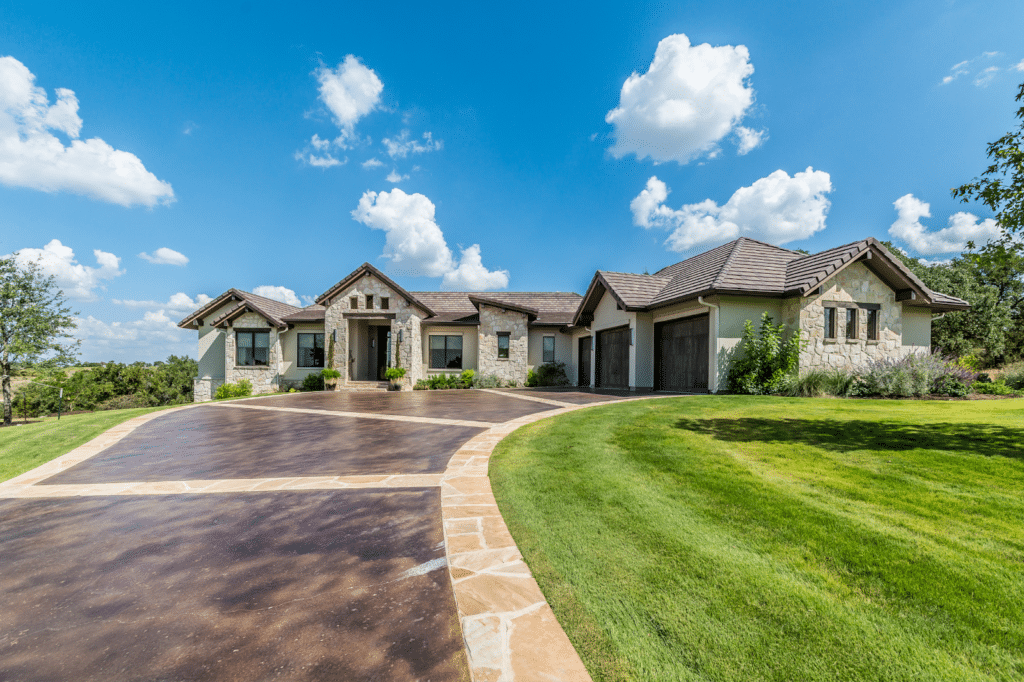
Replacement presents opportunities to enhance your property that repairs cannot offer:
- Increasing driveway width or length
- Adding design elements like Stamped Concrete or borders
- Incorporating better drainage solutions
- Using enhanced concrete mixes with higher strength or decorative aggregates
- Ensuring proper reinforcement techniques
Many homeowners find that once replacement becomes necessary, the opportunity to redesign and improve their driveway’s functionality and appearance becomes a silver lining to what initially seemed like an unwelcome expense.
Professional Assessment vs. DIY Evaluation
While this guide helps identify key indicators, professional evaluation offers substantial benefits.
The Value of Expert Inspection
Concrete professionals bring specialized knowledge and tools to evaluate your driveway’s condition accurately. They can:
- Determine the depth of cracks and their structural implications
- Identify underlying soil or base issues invisible to homeowners
- Assess drainage patterns affecting your concrete
- Determine concrete quality and existing reinforcement
- Provide accurate cost comparisons between repair and replacement options
Many reputable concrete contractors, including Bison Concrete, offer free assessments to help homeowners make informed decisions.
DIY Assessment Checklist
While waiting for professional evaluation, homeowners can conduct a preliminary assessment:
- Document all visible cracks (measure width and length)
- Check for unevenness by rolling a ball across the driveway
- Look for water pooling after rain
- Note any sections where vehicles bounce or feel uneven when driving
- Examine edges of concrete for crumbling or separation from adjacent surfaces
This information helps you communicate effectively with contractors and compare recommendations from different professionals.
Maintenance Strategies to Extend Driveway Life
Whether you choose repair or replacement, proper maintenance afterward is essential to maximize your investment.
Preventative Measures
Implementing these preventative measures can significantly extend your driveway’s lifespan:
- Apply quality concrete sealer every 2-3 years to prevent water penetration
- Clean oil and chemical spills promptly to prevent surface damage
- Avoid using deicing chemicals that can damage concrete (use sand instead)
- Keep heavy loads off the edges of your driveway where concrete is weaker
- Maintain proper drainage around the driveway to prevent soil erosion
Seasonal Maintenance Recommendations
Oklahoma’s distinct seasons require specific maintenance approaches:
Spring: Inspect for winter damage, clean thoroughly, and repair minor cracks. Check drainage patterns during spring rains.
Summer: Consider applying sealer during dry periods. Watch for signs of excessive heat stress, particularly on newer concrete.
Fall: Clear debris regularly to prevent staining and organic growth. Prepare for winter by addressing any drainage issues.
Winter: Avoid metal shovels that can damage concrete surfaces. Use concrete-safe ice melt products sparingly.
Regular maintenance not only extends your driveway’s life but also helps you spot developing issues before they become major problems requiring expensive intervention.
Frequently Asked Questions
How can I tell if a crack in my concrete driveway is serious?
Crack severity depends on several factors. Width is a primary indicator – hairline cracks (under 1/8 inch) are typically cosmetic, while cracks wider than 1/4 inch often signal structural issues. Also consider depth; superficial cracks affect only the surface, while deep cracks extending through the concrete are concerning. Pattern matters too – single straight cracks are less worrisome than interconnected “map cracking” or cracks that form steps or different heights on either side. Finally, growing cracks require immediate attention, as they indicate ongoing structural movement.
What is the average cost difference between repairing and replacing a concrete driveway in Oklahoma?
In Oklahoma, typical concrete driveway repairs range from $2-$8 per square foot depending on the issue severity, with most homeowners spending $800-$2,500 for moderate repairs. Complete replacement typically costs $6-$12 per square foot, putting a standard two-car driveway replacement (approximately 600 square feet) between $3,600-$7,200. This significant price difference explains why many homeowners prefer repairs when feasible. However, extensive repairs approaching 50% of replacement cost often make replacement more economical in the long run, especially considering the extended lifespan of new concrete.
How long should a properly installed concrete driveway last in Oklahoma’s climate?
A properly installed concrete driveway in Oklahoma typically lasts 25-30 years with regular maintenance. However, several factors affect longevity: installation quality (particularly proper base preparation and reinforcement), concrete mix design (appropriate for Oklahoma’s climate extremes), maintenance practices (regular sealing and prompt repairs), and usage patterns (heavy vehicles accelerate deterioration). Oklahoma’s frequent freeze-thaw cycles present particular challenges, making quality installation with proper drainage and joint placement especially important for maximizing lifespan.
Can I repair my concrete driveway myself, or should I always hire a professional?
DIY repairs are feasible for minor issues like hairline cracks, small surface spalls, or basic sealing. These require minimal specialized knowledge and affordable materials from home improvement stores. However, structural repairs, significant settlement issues, or extensive damage require professional expertise. DIY attempts at major repairs often fail due to inadequate preparation, improper materials, or misdiagnosis of underlying problems. Additionally, professionals bring specialized equipment, high-quality commercial-grade materials, and the experience to identify and address root causes rather than just symptoms, ultimately providing more durable results for significant repairs.
If I need to replace my driveway, what improvements should I consider incorporating?
When replacing your driveway, consider these valuable improvements: increased thickness (5-6 inches minimum) and properly spaced rebar for Oklahoma’s climate challenges; proper drainage design to prevent water pooling and erosion; expansion joints to accommodate Oklahoma’s temperature fluctuations; decorative options like stamped or colored concrete to enhance curb appeal; and widening (minimum 10-12 feet for single lanes) for better functionality. Additionally, consider permeable concrete options in flood-prone areas and upgraded concrete mix designs with fiber reinforcement or air entrainment additives specifically formulated for Oklahoma’s freeze-thaw cycles.
Making the Right Choice for Your Concrete Driveway
Deciding between concrete driveway repair and replacement requires careful consideration of your specific situation. By evaluating the extent and nature of the damage, consulting with professionals, and weighing long-term costs against immediate expenses, you can make the right choice for your property. Remember that proper maintenance following either repair or replacement will maximize your investment’s longevity. Whether you need simple crack repair or a complete driveway renovation, working with experienced concrete professionals ensures quality results that enhance both your home’s functionality and its curb appeal. Visit our blog for more helpful information about maintaining your concrete surfaces for years to come.
About Bison Concrete in OKC
We specialize in delivering outstanding digital solutions tailored to each client’s unique needs. With years of industry experience and a dedicated team of experts, we combine technical excellence with creative innovation to help businesses achieve their goals. Our comprehensive services are designed to enhance your digital presence while driving measurable results for your organization.Contact our team today to discuss how our expert team can help transform your digital presence with tailored solutions designed for your specific business needs. Schedule a free consultation to learn more about our services and how we’ve helped businesses like yours achieve exceptional results.
Interested in our services?
Get a free quote today!
Don’t wait to start your next construction project! Whether it’s a custom build, a renovation, or a repair, Bison Concrete is here to turn your ideas into reality.
